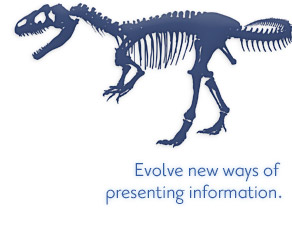
Home > About > Why SpicyNodes? > Teaching & education
![]()

SpicyNodes fuels students’ imaginations, enabling them to create their own nodemaps via a free, easy-to-use online authoring interface. They can integrate media they know and love, such as images, YouTube videos, and music, while also incorporating text and catchy headlines. Best of all, students can share their nodemaps with others.
Browse our Teacher’s Guide and sample lesson plans for ideas in using concept maps in the classroom.
![]()
SpicyNodes produces navigable concept maps that appeal to nonlinear thinkers and that encourage a deeper understanding of materials. Concept maps pave the way for students to interrelate isolated concepts by visually representing and linking nodes. Such knowledge mapping helps students to devise hypotheses more quickly in the learning process than through traditional text-based threaded discussions. (See footnotes for selected relevant research.)
![]()
With multiple classes or groups of students, it can be hard to keep tabs on students’ progress. With SpicyNodes’ affordable memberships, educators can track nodemaps for an unlimited number of students, reset accounts and passwords, and provide students with even more options for customizing the appearance of their nodemaps.
![]()
- Richly visual and interactive. Students can integrate information in a way that’s appealing and easy to navigate, enriching the learning experience.
- Appeal to various learning styles. SpicyNodes is especially appealing to nonlinear thinkers and kinesthetic learners.
- Engage students’ creativity. Integrating multimedia with text, students can draw upon video, audio, and photos to bring their concepts to life.
- Easy to learn. SpicyNodes is easy to author, without any programming required, yet it produces inviting concept maps.
- Do more with less. SpicyNodes is free to use, and offers affordable memberships for educators who need to track nodemaps for multiple classes.
- A sensible use of technology. Your students click web links, text their friends, and twitter. SpicyNodes takes this concept of hyperlinks and short messages to the classroom, allowing students to display ideas, events, and facts in concert with one another.
![]()
- Douma, M., Ligierko, G., Ancuta. O., Gritsai. P., Liu, S. (2009). “SpicyNodes: Radial Layout Authoring for the General Public,” InfoVis 2009, Atlantic City, New Jersey, USA.
- Novak, J. D. (1990). “Concept Maps and Vee Diagrams: Two Metacognitive Tools for Science and Mathematics Education,” Instructional Science, Vol. 19, pp. 29-52.
- Concecao, S. C. O., and Taylor, L. (2007). “Using a Constructivist Approach with Online Concept Maps: Relationship Between Theory and Nursing Education,” Nursing Education Perspectives, Vol. 28, pp. 268-275.
- Gonzalez, H. L., Palencia, A. P., Umana, L. A., Galindo, L., Villafrade, L. A. (2008). “Mediated Learning Experience and Concept Maps: A Pedagogical Tool for Achieving Meaningful Learning in Medical Physiology Students, Advanced Physiology Education, Vol. 32, pp. 312-316.
- Chiou, C-C. (2008). “The Effect of Concept Mapping on Students’ Learning Achievements and Interests,” Innovations in Education and Teaching International, Vol. 45, pp. 375–387.
- Rueda, U., Arruarte, A., Elorriaga, J.A., and Herran, E. (2009). “Learning the Attachment Theory with the CM-ED Concept Map Editor,” Computers & Education, Vol. 52, pp. 460-469.
- Calderón-Steck, F.V. (2006). “Concept Mapping as a Teaching/Learning Tool About Race Relations,” Concept Maps: Theory, Methodology, Technology, Proceedings of the Second Int. Conference on Concept Mapping, Editors: A. J. Cañas and J. D. Novak.
- Suthers, D. D., Vatrapu, R., Medina. R., Joseph, S., and Dwyer, N. (2006). “Beyond Threaded Discussion: Representational Guidance in Asynchronous Collaborative Learning Environments,” Computers & Education, Vol. 50, pp. 1103–1127.


